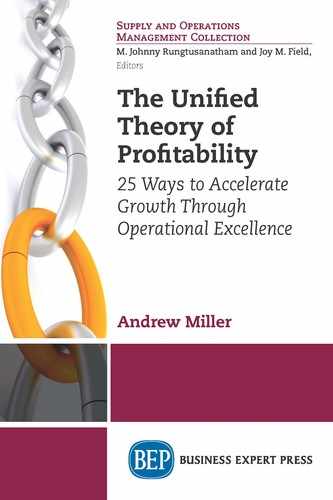Leveraging Technology to Achieve Your One Priority
Everyone loves technology. Technology is cool. It is exciting. It is fast moving. However, it can also drain resources and time from your organization at an alarming pace.
I spent many years managing large technology implementations for big companies, and the themes were almost always the same. Too much time was spent on the technology side of things, and not enough time was spent on the business side. After 12 to 18 months, companies would be no better off, despite having spent hundreds of thousands of dollars (or much more) on a fancy new system.
When you take it down to the simplest common denominator, technology is about data. In order to best leverage technology to reduce costs and help accelerate growth, you need to effectively use the information that you are being provided with.
When you implement a new purchasing system, not only should basic processes be automated (purchase order generation, invoicing, and so on), but there should also be access to information that you did not have before (spend information, supplier information, pricing information, and user information), and it should be in an easy-to-use format.
When you implement a customer relationship management system (CRM), not only should all of your contact and customer information be stored, but you should also have the ability to see trends in the customer relationship (how many meetings on an average it takes to close a sale, who are sales representatives meeting with, whether length of time correlates to deal size, and so on).
When you implement a new Enterprise Resource Planning (ERP) system, not only should all of the back-end processes be automated, but you should also have faster access to better information about your company.
If you do not improve the information that you have and use it more effectively to help your organization, why bother implementing new technology? It all comes down to two simple questions as follows:
• What information do we need to help accelerate the growth of our business?
• How can we use technology to get it?
You should never start with the technology question first. Organizations that start by choosing the technology end up getting bogged down with too much information and throw money at the technology to try and make it useful. Sound familiar? Always start with the business need and the outcome you are trying to achieve.
Take this little test to see how effectively you are using technology.
1. Do we know what information will help us accelerate growth?
2. Do we capture that information now?
3. Do we use that information effectively to accelerate growth?
4. Do we share and apply that information across the organization?
5. Do we know the expected outcome of using that information effectively?
How many of those questions did you respond “Yes” to? Maybe two or three? Maybe four? If you answered “Yes” to all five, congratulations. You are effectively using information and data to grow your business. If you answered “No” to any of those questions, you need to go back to what I said earlier. . .
Effective use of technology starts with understanding the ideal outcome from using the technology and how it ties back to accelerating the growth of your business.
The use of technology should tie back to the one priority you identified earlier in the book.
I was recently speaking with an executive at a financial management company. Their one priority was to create more loyalty with their customers while reducing their administrative burden (they wanted to be more operationally transparent—see Chapter 25). This company started out by printing checks for banks customers. Customers would log onto a website, order their checks, and they would be delivered within a few days. The most frequent question this company received was, “Where are my checks?”
They focused on their one priority—creating more loyalty with customers and reducing their administrative burden—and then asked, “How can technology help us?” They decided to provide customers access to the online tracking system so that they could see when the checks would be delivered. Similar to the FEDEX and UPS example in Chapter 25, by using technology, this company was able to give customers the access they needed to check the status of their order.
This initiative saved the company more than $500,000 per year, allowed the customer service representatives to focus on customer issues where they could add value, and created more loyalty with the customers because they were more engaged in the process. This financial management company could not have done this 20 years ago, because the technology to do so did not exist. They had a clear business outcome in mind and found an effective way to use technology to help achieve it. Another benefit of this was that their customer base grew. They no longer needed to add more customer service representatives to deal with the volume.
Technology is much more scalable than human beings. It takes a lot less effort to cover a lot more ground.
There are lots of shiny new apps and technologies out there. They all claim that they can help your organization grow, increase profitability, improve customer engagement, reduce costs, increase employee retention, and drive innovation—the key is figuring out what is right for you. It means figuring out what data would be most useful to you. Go back to your one priority from Chapter 14 and then ask yourself, “How can technology help us achieve that one priority faster and more effectively?” Once you know what you want, it becomes much easier to find and exploit.
